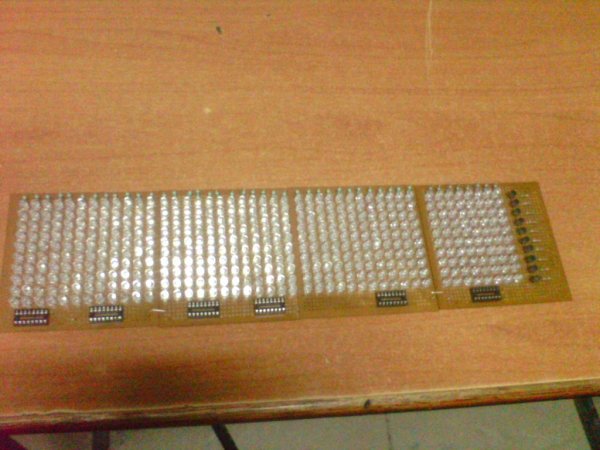here’s a liquid magnetic display by ferolic around a really bright guy named zelf koelman:
i was immediately fascinated by the organic movements of the drops and my brain couldn’t stop thinking about how to build one. we know magnetic particles from adaptive dampening in cars and we also know liquid displays as well as e-paper that turns pixels by a little magnetic current.
so this display is a combination of these and my feeling is that the display consists of little electro-magnets and some fluid that contains magnetic particles in oil. the trick has to be that these particles stay together.
i would guess that each pixel is one magnet that can be controlled individually, i thought this would be four seven segment digits with two mangets per line, i.e. 4x7x2 pixels = 56. then you also need some pixels to lift them from the soup at the bottom, for example 10 or so that would be 66. on the other hand you see that this is a full pixelated display, so if they are using 10×20 pixels, that would be 200.
first of all i did some research on the magnetic material called ferrofluid invented by NASA: “Ferrofluid was invented in 1963 by NASA’s Steve Papell as a liquid rocket fuel that could be drawn toward a pump inlet in a weightless environment by applying a magnetic field.” again, this interesting connection to my first association to the automotive application. it seems that these two materials are different in their properties due to their particle size though.
anyway. quick search on google yielded an article on instructables: 
interestingly, they also cite a project by martin frey in berlin:
next, we need some cheap and small electro-magnets, here are the cheapest & smallest, i could find on ebay:
two centimeters of diameter. i’m sure there’s something cheaper than 4.66€ because that would lead to 200×5 = 1000€ for the magnets.
finally, we need an arduino i would guess that either you use a nano with pwm per line, i.e. 10 ports, or a mega 20 pwms per column. finally, we need some shift register, for example this little guy: 74HC595, there is plenty of projects using it together with arduinos to drive LED matrix displays. for example this:

this would be a really nice project, would love to do it maybe during the christmas holidays. any further suggestions?
